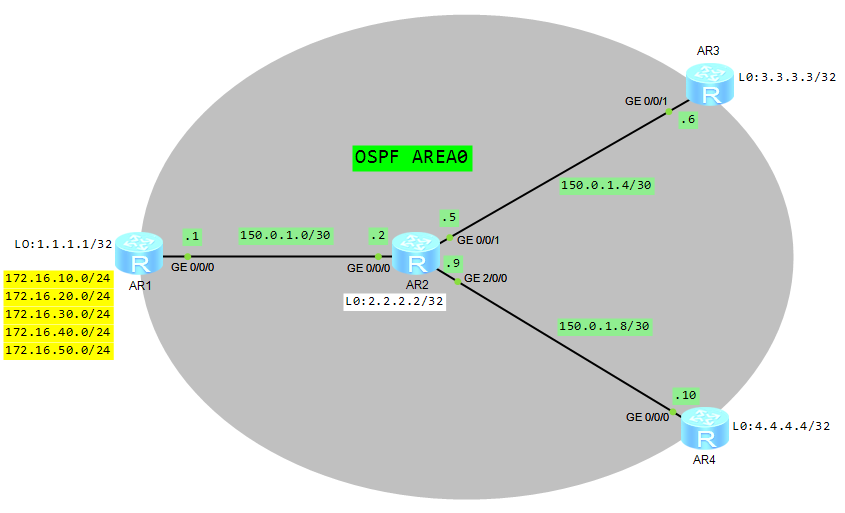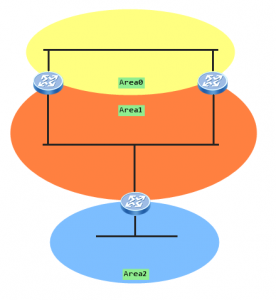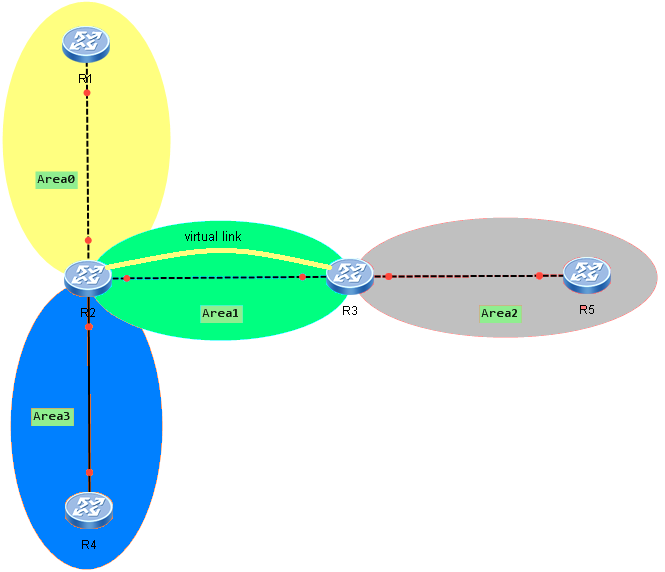Instead of transmitting learned AS external routes, area border router, in a stub area, generates a default route and advertises the route to non-ABRs in the stub area. In short, stub area reduces entries in the routing table of ABR and the amount of routing information to be transmitted.
We have to remember that:
- The backbone area cannot be a stub area
- All routers in a stub area need to be configured using stub attributes
- The ASBR cannot exist in a stub area
- Virtual links cannot be configured in stub area.
Let’s try to configure a simple lab. We would like to see what happens if AREA1 becomes a stub area.
- Based on the topology, configure IP address of each interface.
- Enable OSPF on each router and configure basic OSPF functions
- Configure AREA1 as stub and and check routing information on router Gdansk.
- Check routing information on router Gdansk, previously stopping advertising type 3 LSA into the stub area.
 Labnario Huawei From Scratch
Labnario Huawei From Scratch



